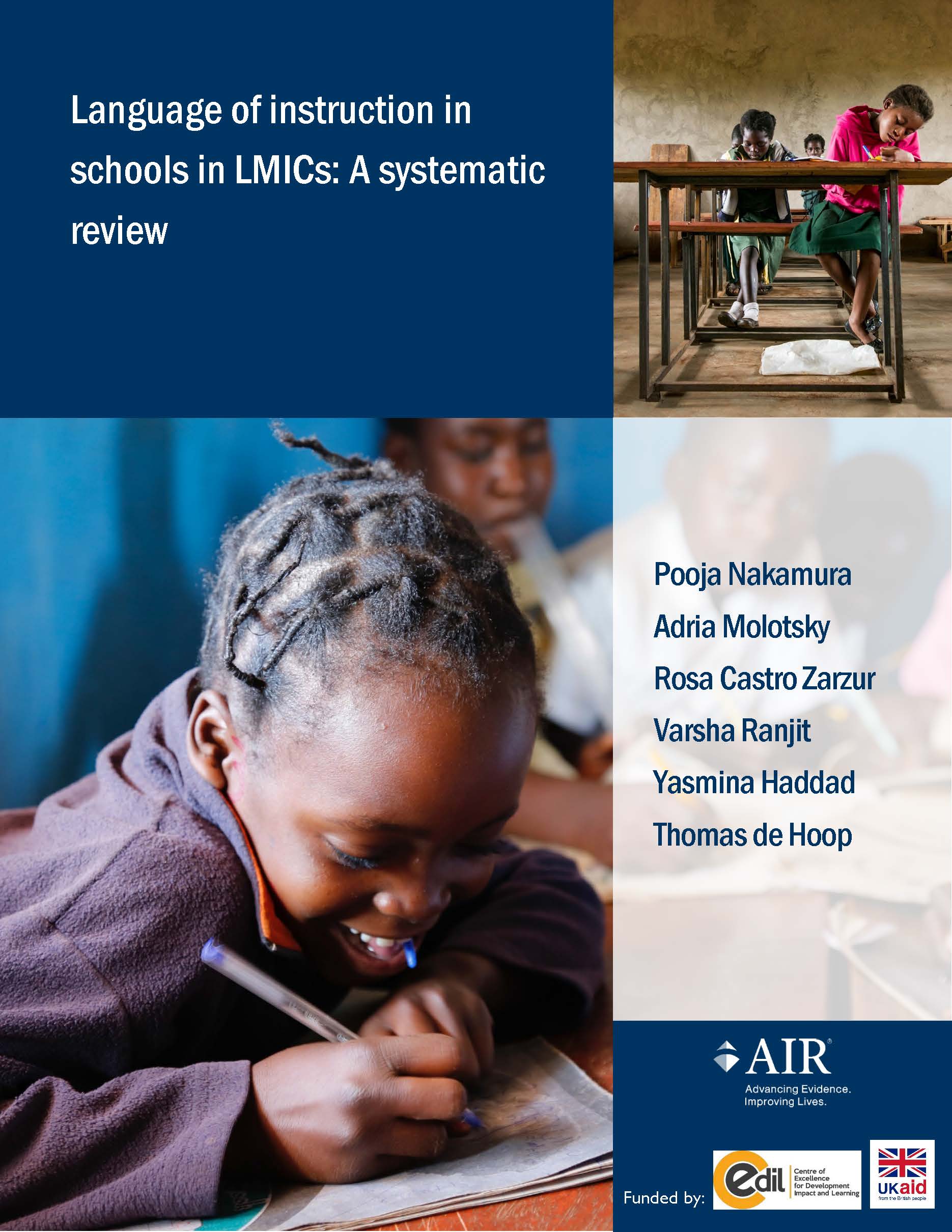CEDIL Evidence Brief 11
Pooja Nakamura, Adria Molotsky, Rosa Castro Zarzur, Varsha Ranjit, Yasmina Haddad and Thomas de Hoop
Over the last 50 years, schooling has expanded dramatically in most low- and middle-income countries (LMICs). However, while children are in school more than ever before, on average, over 50% of them are not acquiring foundational literacy and numeracy skills, and that proportion is expected to increase to 70% over the coming years due to the Covid-19 pandemic.1 Although a myriad of factors contributes to this learning poverty, the role of language is essential as all learning happens in and through language.
This systematic review, funded by the Centre of Excellence for Development Impact and Learning and supported by UK aid from the UK Government, examined the impact of language of instruction (LOI) policies – especially LOI transition policies – on literacy and biliteracy outcomes for primary school children across LMICs. Nearly 40% of students in LMIC’s are educated in languages they do not use or understand (World Bank, 2021). In addition, nearly all LMIC’s students need to transition to a new LOI by the end of upper primary school, even though very little is known of when and how this transition should be made.
Suggested citation:
Nakamura, P., Molotsky, A., Castro Zarzur, R., Ranjit, V., Haddad, Y. and de Hoop, T. (2023). Language of instruction in schools in LMICs: A systematic review, CEDIL Evidence Brief 11. London and Oxford: Centre of Excellence for Development Impact and Learning. https://doi.org/10.51744/CEB11

